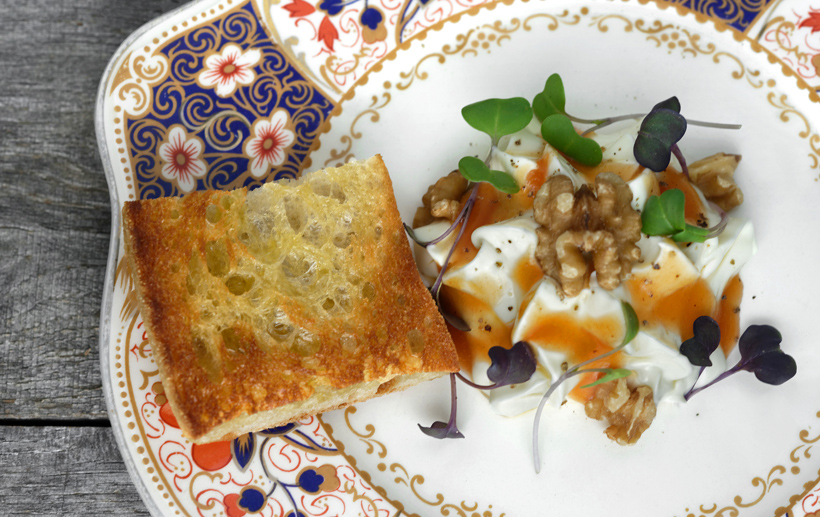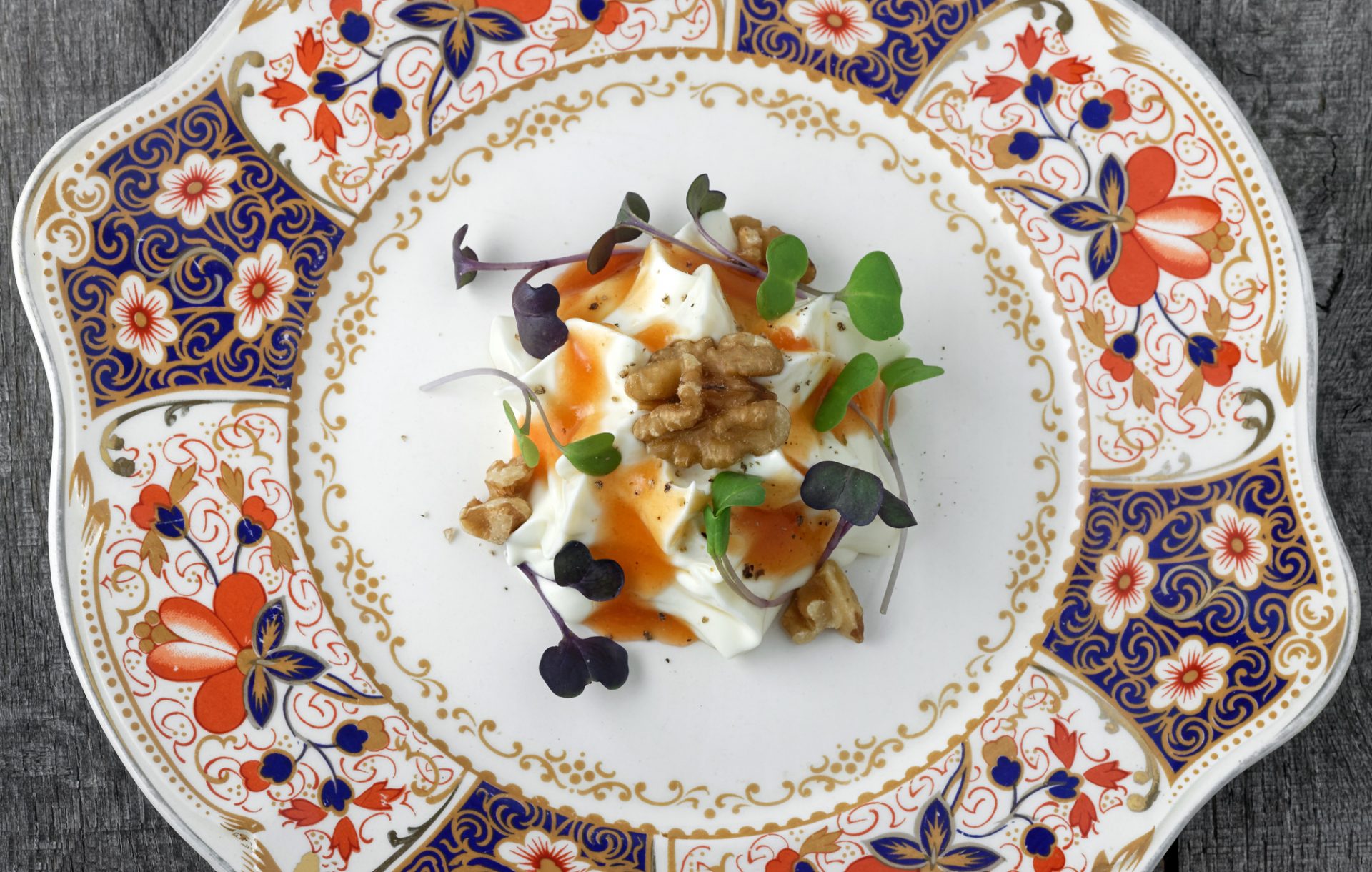As I mentioned in my first post about Plantaže, the winery, not content with producing 80% of the country’s wine, also runs two restaurants. One of them, called Jezero (“lake” in Montenegrin), occupies a choice location on the main road between Podgorica and the Adriatic Sea, right on the shore of Lake Skadar. This is where we finished our visit, eating a seven-course tasting menu specially prepared by Chef Mladen Boljević, and paired with one more round of Plantaže wines (I’ll get back to our third cellar visit in my next post).
The first dish of this feast was a cheese mousse with basil and peach sauce. The creamy mousse texture helped balance the sharp flavor of the Montenegrin cheese, further softened by the sweet fruit sauce, and the basil suitably complemented both the peach and the cheese. For the wine pairing, we were served a glass of the newly released Val Rosé, a very good sparkling rosé, 50% Cabernet Sauvignon and 50% Grenache, with notes of red berries. The chef got a bit carried away with the plate decoration but the whole thing worked well. This is the basis for the recipe we’re going to prepare today.
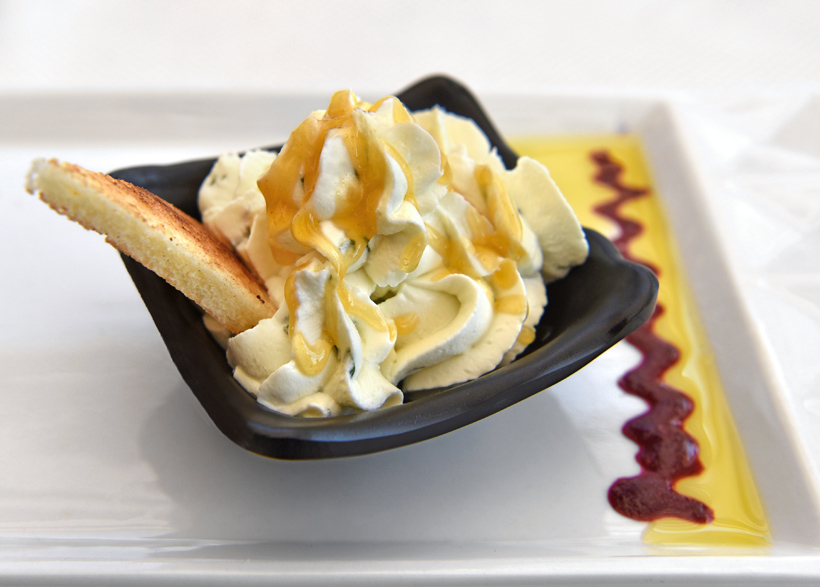
There’s one problem with making a Montenegrin cheese dish outside of Montenegro: you’ll never be able to find Montenegrin cheese. There are a few ways we can clear up this dilemma:
- First, it is possible to find cheeses from the Balkans in the US where I’m based – Kashkaval, for example, a semi-hard to hard cheese with variations made in Bulgaria (like the one I found), Albania, and Serbia, and probably Montenegro too (it’s just not exported). Kashkaval’s rustic character closely matches that of some of the cheeses I tasted in Podgorica.
- Another option is to look for a sheep’s milk cheese from France or Italy. Ossau-Iraty is a good substitute, as I mentioned in my post on Njeguši cheese, and the resulting mousse will be much milder than with Kashkaval.
- Finally, there’s nothing wrong with just making my recipe with your personal favorite hard cheese (although the proportions would most likely vary). A Swiss-type cheese like Beaufort would work great, and in fact, it’s what was used in another recipe from which I took inspiration: Jean Sulpice’s Beaufort mousse.
With the peach sauce and the addition of walnuts and microgreens (instead of basil), this makes for a tasty and beautiful plate. Sparkling rosé not included, sorry!
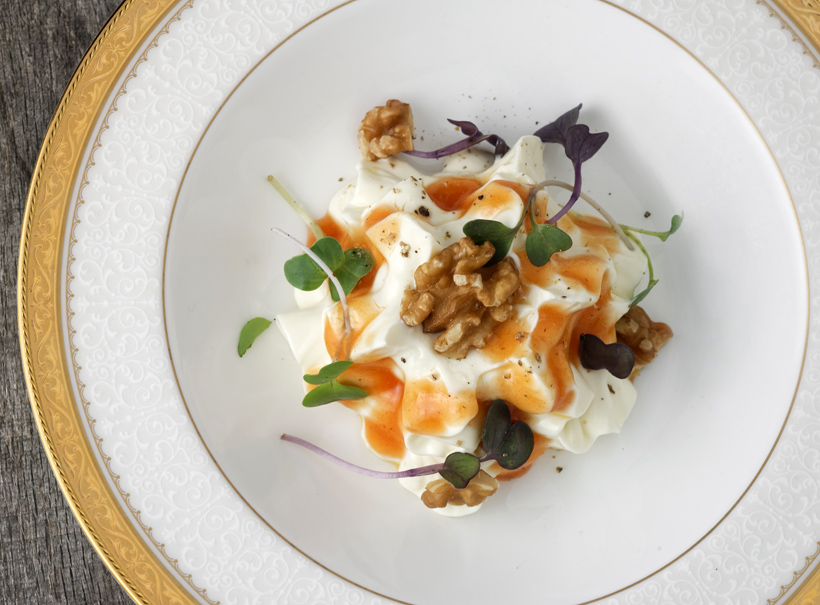
Cheese mousse
Yields 4 servings
330 g skim milk
165 g heavy cream
1 g powdered sugar
4.5 g agar agar (can be purchased here)
230 g hard or semi-hard cheese (such as Kashkaval or Ossau-Iraty), grated
salt
- In a small saucepan over high heat, bring the milk, cream, and sugar to a boil. Sprinkle and whisk in the agar agar, then simmer over low heat for a couple minutes.
- Transfer the mixture to a blender, add the cheese, and process on high speed for 1 minute. Rectify the seasoning if needed. Transfer to a plastic container, let cool and refrigerate for at least 3 hours.
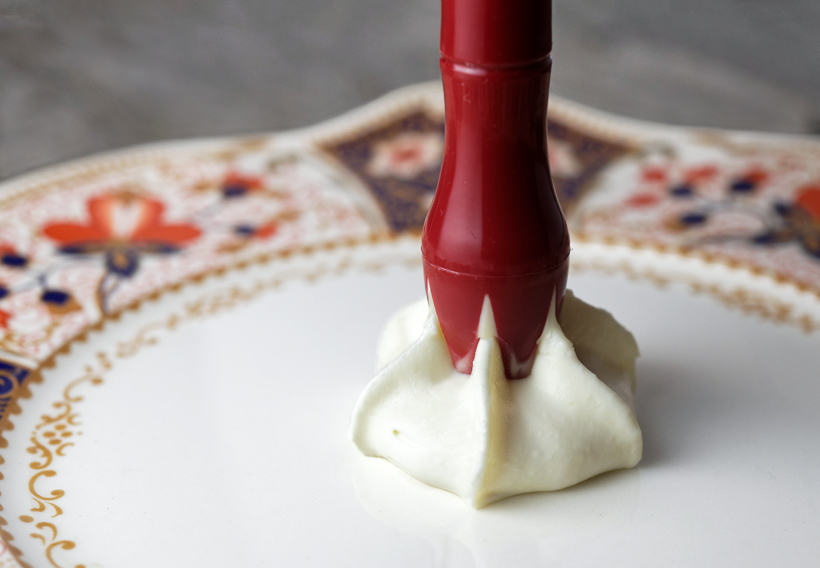
Peach sauce
Yields over 4 servings
85 g (about 1/2) very ripe peeled and pitted yellow peaches, quartered
85 g water
85 g white wine
15 g sugar (or 20 g if the peaches aren’t very ripe)
1 clove
- Place the peach quarters, water, white wine, sugar, and clove into a small saucepan. Bring to a boil, then simmer over low heat for 20 minutes. Remove from the heat and let cool about 15 minutes.
- Discard the clove, and transfer the mixture to a blender. Process until smooth. The liquid should have the consistency of a sauce (not of a purée) so it can be drizzled over the cheese mousse. If the texture’s too thick, mix in a little bit more water. Reserve in a plastic container. The sauce can be kept in the refrigerator for several days.
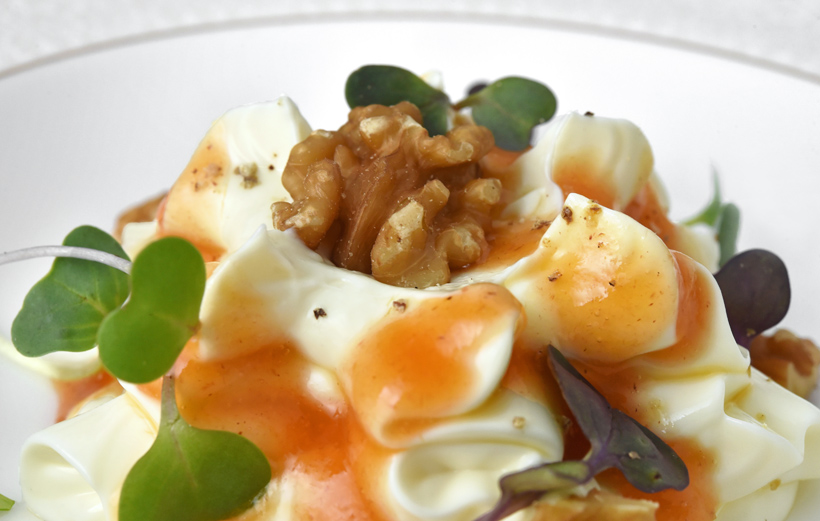
Assembly
Yields 4 servings
cheese mousse
peach sauce
about 15 g olive oil
2 pieces of French baguette, each 6 cm long, cut lengthwise
black pepper, coarsely ground
5 g microgreens (including micro basil, if possible)
20 g shelled walnuts halves
- Take the cheese mousse and peach sauce out of the fridge at least 30 minutes ahead of time.
- Transfer the cheese mousse (which should be a solid, jellified block) to a blender, and slowly increase the speed from low to high to turn the mixture into a smooth cream, pausing to scrape the jar as needed.
- Fit a 1 liter siphon with a tulip decorating tip. Pour the cheese cream into the siphon, charge with one cartridge of N2O, and shake vigorously. Keep in water bath at 49 C / 120 F for up to 30 minutes.
- Heat the olive oil in a frying pan over medium heat. Add the bread, cut side down, and fry until light brown. Reserve.
- On each plate, pipe some cheese mousse in the center, drizzle some peach sauce on top, and season with black pepper. Garnish with microgreens and walnut halves, and serve with the toasted bread.
